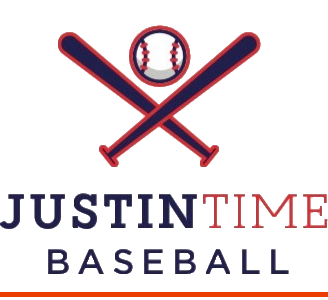Baserunning Fundamentals
When I was in high school. I barely made the cut for my varsity baseball team. I remember being the last one chosen for the team. At the time, the fact that I made the team was a huge accomplishment in my life. When the coach said I made the team, he mentioned that I needed to improve my base running skills. Base running does not just mean speed. Base running is a skill that is required as young as six years old.
Running to first base: The title sounds so simple, but I yet to see middle school age baseball players do this properly. When teaching how to run to first base, children must understand not to run TO the base but THROUGH the base. The rules in baseball allow a player to run all the way through the base (first base only). When running through the base, make sure your players understand to have their lead foot hit the front part of the base first. Ultimately, it is the closest part of the base, which makes it quicker to get to and will prevent injuries from occurring.
Breakdown the body after hitting the base: Children need to learn body control. When you run through first base, tell your players to break down their feet or what I call “chop chop UAP”. When your feet “chop chop”, it is like your foot pressing on the brake pedal in a car that’s decelerating in speed. This is critical for students to know because they can advance to the next base while under control. A UAP stands for a Universal Athletic Position. I will be using this term quiet often. While pursuing my graduate studies at Manhattanville College my professor Stacey Weirl taught this term to the class and its something I will never forget when teaching my players!
Base running in tee ball and going into coach pitch:
I bet you are reading this article and saying in your head “Are you kidding?” There are many techniques you can teach about base running as early as tee ball. As a coach your job is to make sure the players understand where to run. I have seen hundreds of tee ball games, and I cannot tell you how many times a child either does not run to the right base or even run at all. It is VITAL each player learns about baserunning when they begin tee ball.
Examples of base running drills (tee ball and coach pitch level):
1) March around the bases in line (ages 4-6): Players will be in a single file line, and march or walk while saying the name of the base as they touch each base. This is a confidence builder, and it also establishes where each base is. Tell your players that if you miss a base, you can be called out for it.
2) Single, Double, Triple, Homerun base running (Ages 6-12): Explain that a single is running to first safely, a double you run to second safely, so on and so forth. This teaches your players to understand how to run the bases while knowing they can be called out if it’s not completed correctly.
3) Beat it or Banana Turn (Ages 6-12 years old): A banana turn is when a player makes a slightly wider turn half way down the first base line. This is used to create a bigger turn to possibly advance to the next base. The “beat it” term means “beat out the ground ball”. You can challenge your players by saying “beat it” or “banana turn” out loud to them as they run to the base.
4) Red, Yellow or Green Light (ages 4-7 years old): I have played this game hundreds of times with my players. I can say that I have never seen a player who does NOT like this game. This is a playful game that is simple. When the Coach yells “Green light!” every player runs as fast as they can. When the Coach says, “Red light!” make sure your players stress the importance of “chop chop” and UAP. It is all about body control.




